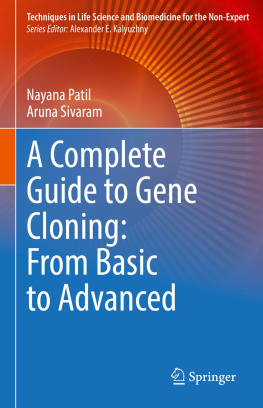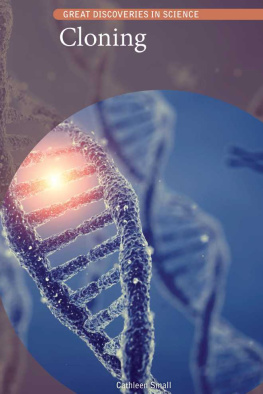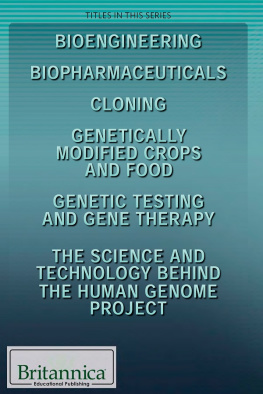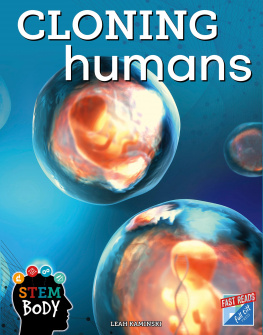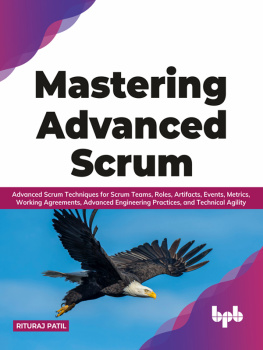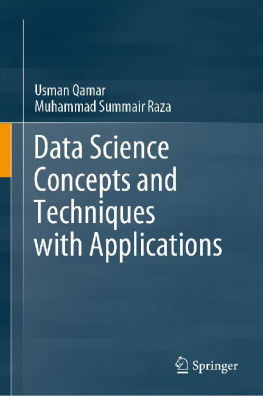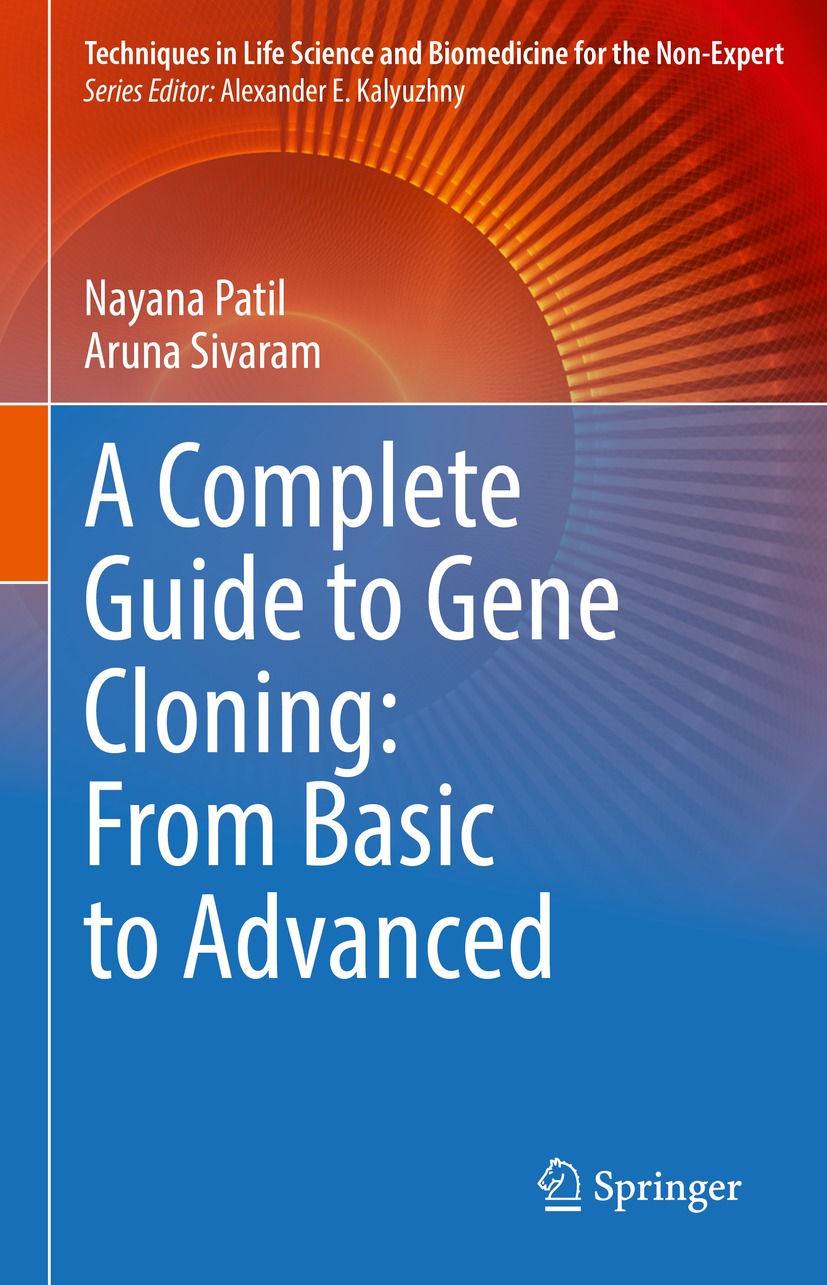Techniques in Life Science and Biomedicine for the Non-Expert
Series Editor
Alexander E. Kalyuzhny
University of Minnesota, Minneapolis, MN, USA
The goal of this series is to provide concise but thorough introductory guides to various scientific techniques, aimed at both the non-expert researcher and novice scientist. Each book will highlight the advantages and limitations of the technique being covered, identify the experiments to which the technique is best suited, and include numerous figures to help better illustrate and explain the technique to the reader. Currently, there is an abundance of books and journals offering various scientific techniques to experts, but these resources, written in technical scientific jargon, can be difficult for the non-expert, whether an experienced scientist from a different discipline or a new researcher, to understand and follow. These techniques, however, may in fact be quite useful to the non-expert due to the interdisciplinary nature of numerous disciplines, and the lack of sufficient comprehensible guides to such techniques can and does slow down research and lead to employing inadequate techniques, resulting in inaccurate data. This series sets out to fill the gap in this much needed scientific resource.
More information about this series at https://link.springer.com/bookseries/13601
Nayana Patil and Aruna Sivaram
A Complete Guide to Gene Cloning: From Basic to Advanced

Logo of the publisher
Nayana Patil
School of Bioengineering Sciences& Research, MIT ADT University, Pune, Maharashtra, India
Aruna Sivaram
Associate Professor, School of Bioengineering Sciences & Research, MIT ADT University, Pune, Maharashtra, India
ISSN 2367-1114 e-ISSN 2367-1122
Techniques in Life Science and Biomedicine for the Non-Expert
ISBN 978-3-030-96850-2 e-ISBN 978-3-030-96851-9
https://doi.org/10.1007/978-3-030-96851-9
The Editor(s) (if applicable) and The Author(s), under exclusive license to Springer Nature Switzerland AG 2022
This work is subject to copyright. All rights are solely and exclusively licensed by the Publisher, whether the whole or part of the material is concerned, specifically the rights of translation, reprinting, reuse of illustrations, recitation, broadcasting, reproduction on microfilms or in any other physical way, and transmission or information storage and retrieval, electronic adaptation, computer software, or by similar or dissimilar methodology now known or hereafter developed.
The use of general descriptive names, registered names, trademarks, service marks, etc. in this publication does not imply, even in the absence of a specific statement, that such names are exempt from the relevant protective laws and regulations and therefore free for general use.
The publisher, the authors and the editors are safe to assume that the advice and information in this book are believed to be true and accurate at the date of publication. Neither the publisher nor the authors or the editors give a warranty, expressed or implied, with respect to the material contained herein or for any errors or omissions that may have been made. The publisher remains neutral with regard to jurisdictional claims in published maps and institutional affiliations.
This Springer imprint is published by the registered company Springer Nature Switzerland AG
The registered company address is: Gewerbestrasse 11, 6330 Cham, Switzerland
Foreword
I would like to appreciate the efforts of the authors in bringing out the book in its current form. With recombinant DNA technology and synthetic biology emerging as leading technologies in addressing several global challenges, this book provides a timely intervention in initiating young students to the field. The book begins with an introduction into the history of rDNA technology and then delves into the technical details. It emphasizes on the technical aspects of vectors, gene isolation methods, cloning strategies, and the screening strategies of transformants in significant detail. Advanced gene editing techniques like zinc finger nucleases, transcription activators like effectors, RNA interference, CRISPR Cas system, Cre-lox and their application in various fields including healthcare, agriculture, and environment sustainability have been elaborated. A detailed discussion on these recent trends and their applications will kindle young minds with new ideas and inculcate research aptitude early on in life. The final chapter on bioethics and safety is an important one for the student audience. Another notable approach of this book is the clear illustrations used to explain different topics in an attractive and informative manner. The tables in each chapter collate several information available in literature and give a concise view of the topic. Every chapter concludes with a crisp summary and a few conceptual questions which ignite the readers mind. Besides Dr. Nayana and Dr. Aruna from MIT School of Bioengineering Sciences and Research and several authors from academia, research, and industry have contributed towards this book. I wish them all a great success in the reception of the book.
Renu Vyas
Preface
Anyone who has studied even the basics of biology would recognize and appreciate the importance of cloning technologies and its contribution to the progress of this science. Cloning or recombinant DNA technology is perhaps one of the most applied techniques in Biology. Through this book, we aim to provide concise information to beginners, thereby generating their interest and helping them develop a keen acumen in cloning techniques. This will be a one of a kind book written in lucid language, devoid of scientific jargons. If at all these jargon have to be used, they would be clearly explained in simple terms.
We begin the book by giving a quick peep into the history of cloning techniques by discussing all major milestones in cloning/recombinant DNA technology. This is followed by more technical concepts like the cloning strategies, the inserts, the vectors, the restriction enzymes, and the DNA transfer protocols. All basic aspects pertaining to cloning in prokaryotic and eukaryotic cells along with the screening strategies have been covered concisely, but with enough details and illustrations to make it interesting, attractive, and informative.
We conclude the book by deliberating on the ethical and safety aspects of recombinant DNA technology. This chapter, we presume is important especially given that we are addressing readers who are either beginners or novices in the field. Our vision is not only to create resources with a sound knowledge of the techniques, but also to develop a sense of responsibility and accountability in them.
Every chapter in this book has been followed by a brief summary where we discuss all salient points covered. The book is rich in illustrations. Each chapter has question and answer section, which the readers can use as samples to review their understanding of the topics.
We hope this book would be a useful guide to people to develop a basic understanding of cloning/recombinant DNA technologies.
Nayana Patil

